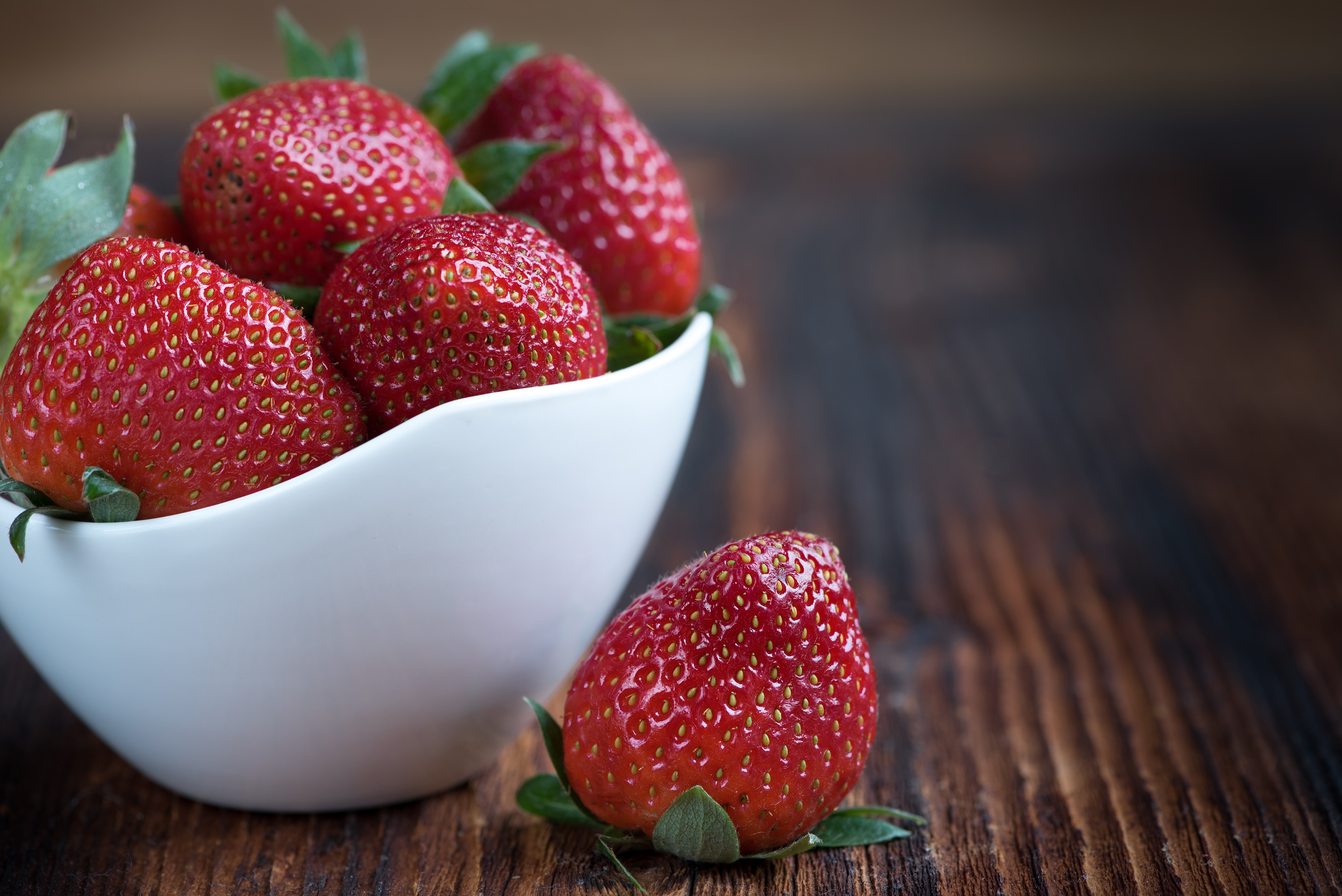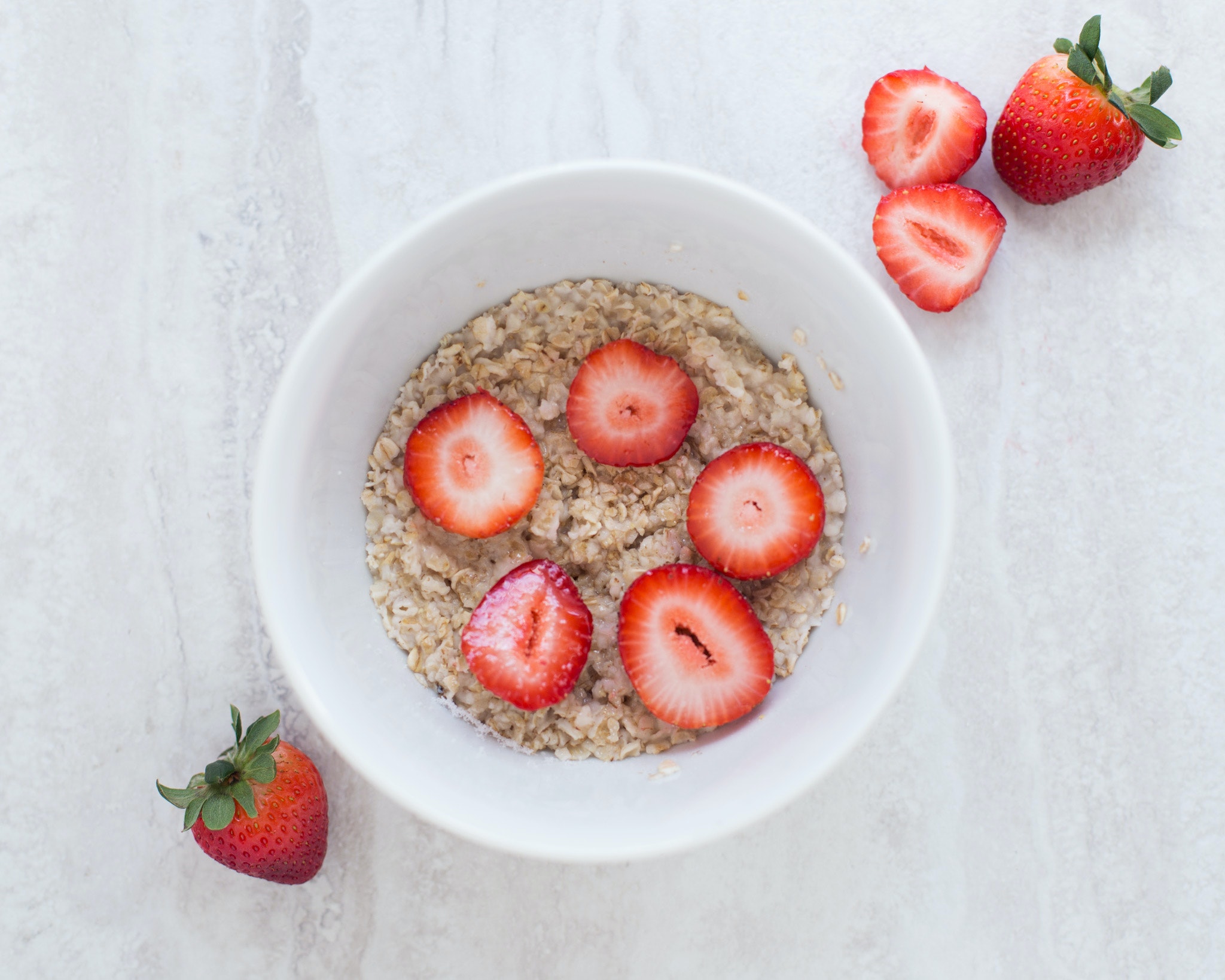Strawberries: Delicious and Nutritious
go.ncsu.edu/readext?925223
en Español / em Português
El inglés es el idioma de control de esta página. En la medida en que haya algún conflicto entre la traducción al inglés y la traducción, el inglés prevalece.
Al hacer clic en el enlace de traducción se activa un servicio de traducción gratuito para convertir la página al español. Al igual que con cualquier traducción por Internet, la conversión no es sensible al contexto y puede que no traduzca el texto en su significado original. NC State Extension no garantiza la exactitud del texto traducido. Por favor, tenga en cuenta que algunas aplicaciones y/o servicios pueden no funcionar como se espera cuando se traducen.
Português
Inglês é o idioma de controle desta página. Na medida que haja algum conflito entre o texto original em Inglês e a tradução, o Inglês prevalece.
Ao clicar no link de tradução, um serviço gratuito de tradução será ativado para converter a página para o Português. Como em qualquer tradução pela internet, a conversão não é sensivel ao contexto e pode não ocorrer a tradução para o significado orginal. O serviço de Extensão da Carolina do Norte (NC State Extension) não garante a exatidão do texto traduzido. Por favor, observe que algumas funções ou serviços podem não funcionar como esperado após a tradução.
English
English is the controlling language of this page. To the extent there is any conflict between the English text and the translation, English controls.
Clicking on the translation link activates a free translation service to convert the page to Spanish. As with any Internet translation, the conversion is not context-sensitive and may not translate the text to its original meaning. NC State Extension does not guarantee the accuracy of the translated text. Please note that some applications and/or services may not function as expected when translated.
Collapse ▲Strawberries are a favorite fruit among many and are ready to harvest in North Carolina beginning around the middle of April until the end of May. Fortunately strawberries are mostly available year round in grocery stores making them easy to obtain and easy on the pocketbook. This red fruit has a low-glycemic index making them an option for people looking to control or reduce their glucose levels. If you get frustrated trying to add delicious nutritious foods to your diet, strawberries are the perfect tasty inexpensive choice and very nutritious for you to eat.
 Strawberries are good for the whole body. They naturally have vitamins, fiber, and high levels of antioxidants known as polyphenols, which protect the body’s tissues against oxidative stress. Strawberries are among the top 20 fruits in antioxidant capacity. Strawberries can also help reduce the risk of coronary heart disease. This popular heart shaped fruit is packed with heart-protective and blood-pressure-lowering nutrients. They have no sodium, fat, or cholesterol. Strawberries may help to offset inflammation in the brain and delay age-related memory loss. One cup of strawberries has more vitamin C than an orange and is an excellent source of Magnesium, Phosphorus, Calcium, Potassium, Folate and Vitamin K. With only 49 calories per cup strawberries are considered nutrient dense. Nutrient dense foods have high levels of nutrients and are low in calories.
Strawberries are good for the whole body. They naturally have vitamins, fiber, and high levels of antioxidants known as polyphenols, which protect the body’s tissues against oxidative stress. Strawberries are among the top 20 fruits in antioxidant capacity. Strawberries can also help reduce the risk of coronary heart disease. This popular heart shaped fruit is packed with heart-protective and blood-pressure-lowering nutrients. They have no sodium, fat, or cholesterol. Strawberries may help to offset inflammation in the brain and delay age-related memory loss. One cup of strawberries has more vitamin C than an orange and is an excellent source of Magnesium, Phosphorus, Calcium, Potassium, Folate and Vitamin K. With only 49 calories per cup strawberries are considered nutrient dense. Nutrient dense foods have high levels of nutrients and are low in calories.
Once a strawberry is picked they don’t ripen farther. Strawberries store best in the refrigerator unwashed until ready to eat. They are versatile and can be used in custards, fruit salads, baked goods and salads. Here are some tasty ways to use strawberries in recipes:
Try this recipe from EFNEP’s blog site: ncefnep.org
Berry Blast Bars
Ingredients:
- Non-stick cooking spray
- 1 cup flour
- 1 cup oats
- 1/2 cup brown sugar
- 1/4 teaspoon baking soda
- pinch of salt
- 1 egg
- 1/2 cup unsalted butter
- 2 Tablespoons vegetable oil
- 1/4 cup milk
- 1/4 cup strawberry jam
- 1 cup strawberries, sliced (or other berries that are in season)
Directions:
- Preheat the oven to 350˚ F.
- Spray square baking dish with non-stick cooking spray.
- Mix flour, oats, sugar, baking soda, salt, egg, butter, vegetable oil, and milk in a large bowl until a doughy mixture is formed.
- Measure out 1 1/2 cups of dough and press to the bottom of the pan.
- In a separate bowl, stir jam and strawberries together, spread over dough in the pan.
- Press the rest of the dough with your hands on top of the jam mixture. The dough will not completely cover the top.
- Bake for 25 minutes and let cool for 15 minutes.
- Cut into 12 bars.
Calories per serving: 180
More Ways to Enjoy
- Wash and add cut strawberries to a saucepan with a little apple or orange juice. Add honey or monk fruit to taste and boil until thick and syrupy. Refrigerate and use within 3 days or freeze. Thaw in the refrigerator or on the stovetop to maintain safe food temperatures. This sauce is delicious on pancakes, waffles, yogurt or as a topping for ice cream. Slice fresh strawberries in a tossed salad
- Add sliced strawberries to pancake batter instead of blueberries
- Top cereal, oatmeal, yogurt, cottage or ricotta cheese with strawberries
- Add frozen or fresh to smoothies
- Try covering fresh strawberries in dark chocolate coating or a sugar free chocolate pudding
- To preserve a strawberry surplus:
- Simply freeze unwashed strawberries before they go bad to use in recipes. Try these sweetened freezing techniques from the National Center for Home Food Preservation, or follow these guidelines for unsweetened methods.
- There are many methods for canning strawberries at home – fruit purees, berry syrups, strawberry jelly, freezer jam, strawberry jam
- Sugar is a necessary part of the food preservation process. Currently, there no recommended recipes for sugar free freezer jam, however, there is a reduced sugar method.
 To explore more ways to use strawberries and other delicious techniques for incorporating healthier foods into your diet, join Rhonda Church in cooking classes with the Expanded Food and Nutrition Education Program, (EFNEP). Contact Rhonda at the N.C. Cooperative Extension, Ashe County Center: 336-846-5850 or email rhonda_church@ncsu.edu .
To explore more ways to use strawberries and other delicious techniques for incorporating healthier foods into your diet, join Rhonda Church in cooking classes with the Expanded Food and Nutrition Education Program, (EFNEP). Contact Rhonda at the N.C. Cooperative Extension, Ashe County Center: 336-846-5850 or email rhonda_church@ncsu.edu .
ABOUT EFNEP – The Expanded Food and Nutrition Education Program, offers free (income guidelines apply) nutrition classes to help families and youth cook healthy meals at home, be more active, save money on food costs, and handle food safely. In partnership with the Eat Smart Move More NC initiative, EFNEP Educators help families and youth adopt positive health behaviors to achieve and maintain a healthy weight. EFNEP is a program of Cooperative Extension through NC State University and NC A&T State University.



